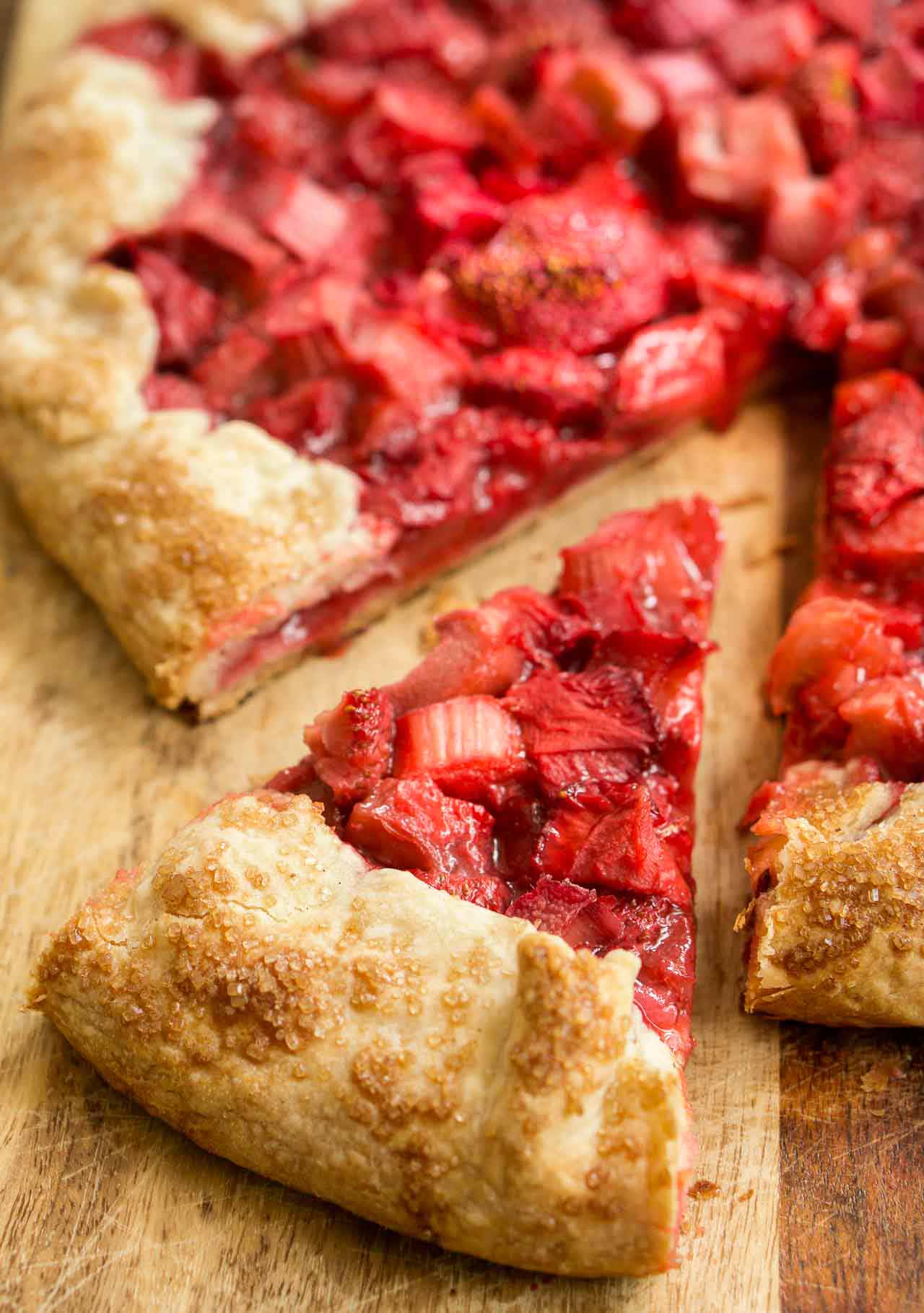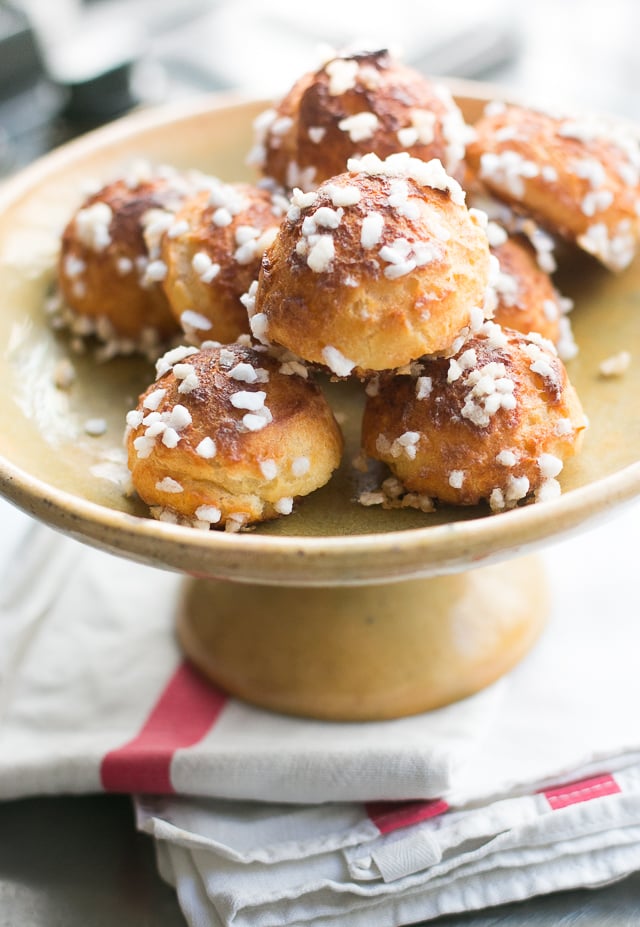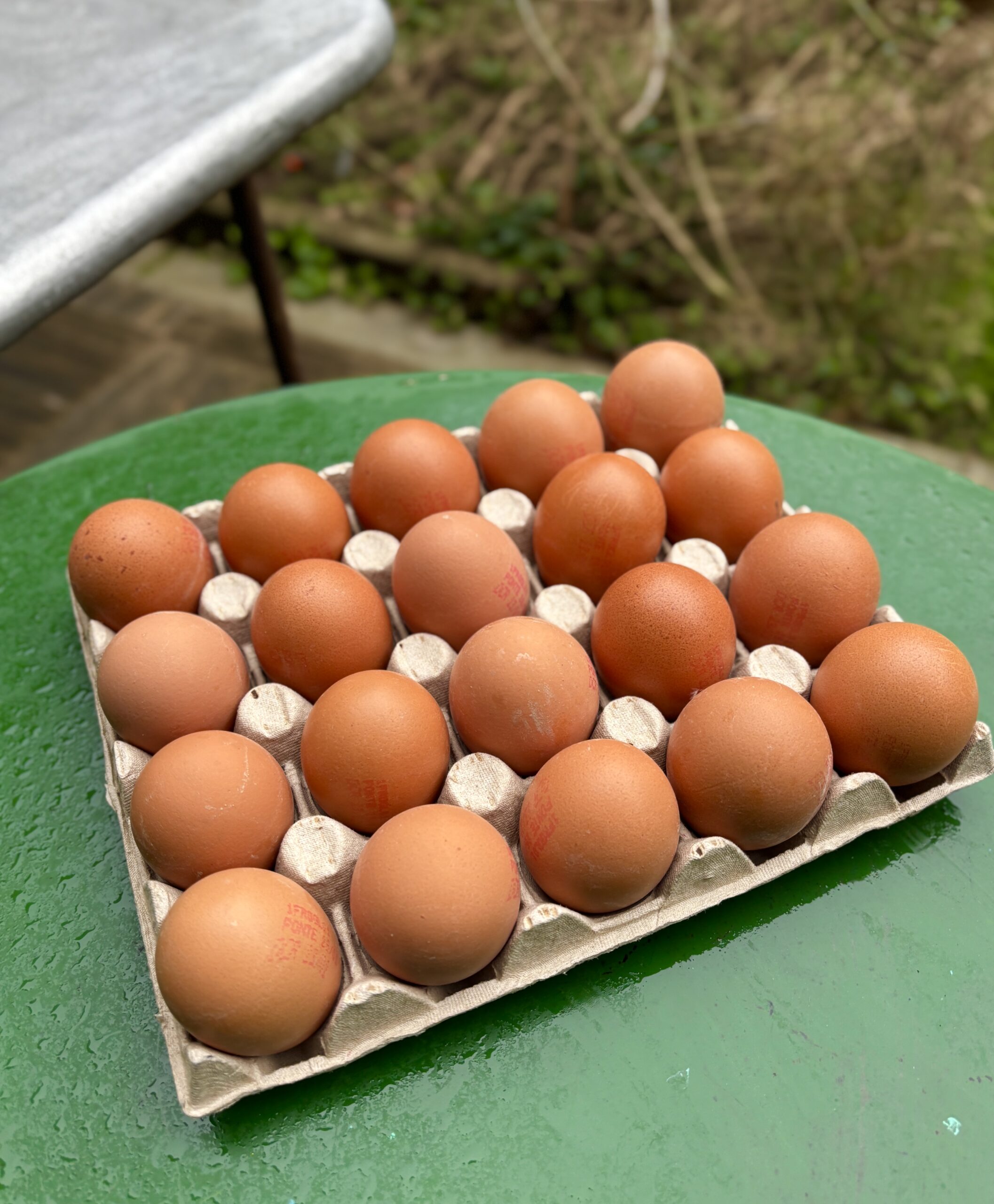Winter Fruits
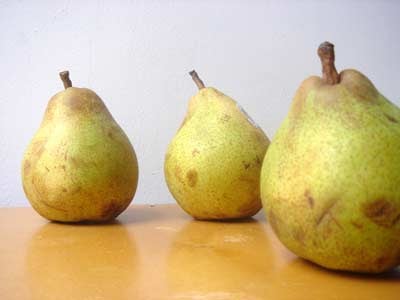
Pears
Good pears are in danger of disappearing. The best-tasting varieties (Comice, Bartlett, and French Butter) become easily bruised as they ripen, so large stores are reluctant to carry them. So what can you do? Buy them when you see them. Don’t be afraid to purchase rock-hard pears of these varieties: unlike most other fruits, pears don’t ripen well on the tree and should be ripened at home for the most succulent, juicy flavor. I carefully cradle my pears when I carry them home, then let them rest on the countertop, standing upright on a kitchen towel, until slightly soft to the touch.
Bartlett pears are amazingly aromatic, and in Normandy, folks who distill Calvados add a few along with the apples (about 10%) to heighten the aroma. Pear eau-de-vie, or Pear William (sometimes recognized as the clear liquor with the whole pear in the bottle) is a distillation of Bartlett pears. It takes about 60 pounds of pears to make a small, precious bottle of Pear William. The steam of the cooking pears is captured and that little trickle of liquid is bottled as eau-de-vie.
So stop complaining about the price.
Most pears can also be checked for ripeness by sniffing the stem end. I bought some perfectly-ripe Comice pears last week that were as perfumed as the most divine roses (which are relatives of apples and pears.) Each time I passed them on my countertop, I couldn’t resist picking one up for a sniff.
For cooking and poaching, Bosc and Winter Nellis pears are the best choice as they hold their shape once cooked. These varieties have little fragrance. Although other cooks use them, I’ve never tasted an Anjou pear that was any good.
(And don’t curse those little plastic labels that are stuck on pears. Without those, many of the supermarkets wouldn’t sell the lesser-known varieties of pears, since it’s difficult for the cashiers to know which are which. )
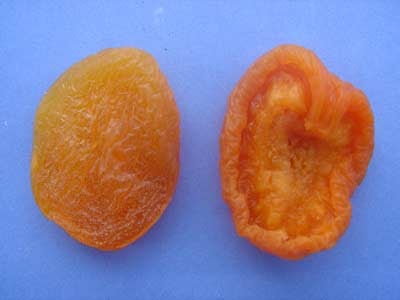
Dried Apricots
When I visit the United States, I always return loaded down with at least three or four pounds of California dried apricots (right). I’m not xenophobic, but the Turkish apricots (left) are tasteless, bland, and sugary-sweet. If you come visit me, that’s what I ask my friends to pack for me.
I grew up snacking on California dried apricots and I used to call them ‘dried monkey ears’. Their puckery tang makes them ideal when simmered in a light sugar syrup until soft (1 part sugar or honey to 4 parts water, perhaps with a stick of cinnamon or vanilla bean) and served alongside a savory meat or chicken stew. I love them in desserts and I’ll often make a simple (and healthy) soufflé of dried apricots plumped in white wine. Once cooked, I puree them, fold in some whipped egg whites and sugar, and minutes later I pull from the oven a tray of apricot soufflés.
Although the Turkish (and Chinese) varieties are less than half the price, they’re no bargain. If you substitute them in a recipe that calls for dried apricots, you’ll be sadly disappointed. The California growers are having a hard time competing, since so many people seem to shop solely on price, not quality.
So have one less Vente Mocchachino a year and splurge on good-tasting dried fruit. Please.
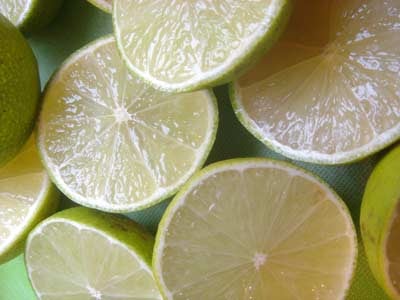
Limes
The most widely available lime in the US is the Persian lime. Since it’s seedless, it’s the one most commercial growers cultivate. Often found solidly green and bullet-hard (they’re picked underripe and gassed to preserve their unripe green color), they yield little juice.
As with all citrus, select limes that feel heavy for their size. If you live in France, where they vendors don’t like it when you handle the produce, you risk getting scolded with, “Monseur! Ne touchez pas!” (and in the old days, they would add a petit slap if you were in striking distance). So to avoid the humiliation, I scout around ethnic markets and root around the citrus bins, elbowing aside the Arabic and Chinese women, touching every fruit, and tossing back those that don’t feel hefty and full of juice.
If you pick one up and it feels light, that’s an indication there’s little juice inside. Look for limes that are yellow-golden with a greenish hue. As mentioned, ethnic markets seem to offer golden limes that are valued for their taste, not their looks. And don’t be put of by appearances: older, punky-looking citrus often tastes best since it’s spent the maximum time ripening on the tree rather than sitting in cold storage.
To get the most juice from limes, make sure your limes are at room temperature. Roll them firmly on the countertop with your hand to rupture the juice sacs, then squeeze. While some cookbook authors advise popping them in the microwave for a few seconds, I’d feel funny about heating fresh limes. It jus doesn’t seem right.
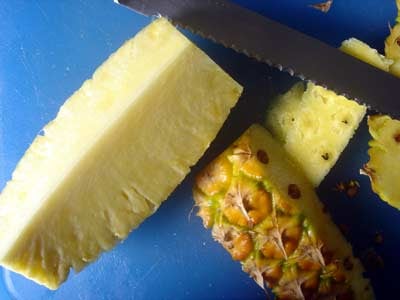
Pineapples
While everyone loves pineapple, no one seems to remember the last time they actually bought one. They seem to make an appearance only for special occasions. So next time you’re at the market, why not pick one up? Personally, it makes me feel better to have something around the house that’s a reminder of the tropics during the long, grey days of winter. (Especially if I pick up a bottle of dark rum at the same time!)
I buy pineapples often during the winter. I like to cut them up and keep pieces in the refrigerator for snacking or to add to a fruit salad with grapes and tangerines. And blended with some dark rum and lime juice, served in a nice glass with some chips and guacamole, I don’t know of a better way to beat the winter blahs. (Luckily, for some reason, they have the best tortilla chips in France. Avocados are plentiful as well.)
The most common varieties of pineapple are the Cayenne and Esmerelda, although you’ll rarely find pineapples listed by variety. Harold McGee suggests buying pineapples grown as close to the equator as possible, although I’ve had exceptional pineapples from Hawaii, the Ivory Coast of Africa, and Costa Rica.
Contrary to popular belief, there’s nothing that plucking out the center leaf of a pineapple will tell you about ripeness. Pineapples don’t ripen after picking so buy one labeled Jet-Fresh, or with a ticket stating that it’s been picked ripe, if possible. Take a sniff: a good pineapple will reveal if it’s ripe by a tropical aroma at the stem end. Lots of yellow on the skin is another indication of ripeness. Avoid fruits with soft spots and mold.










